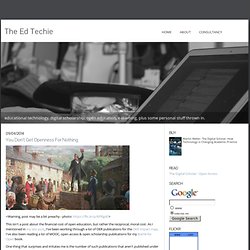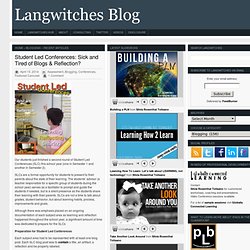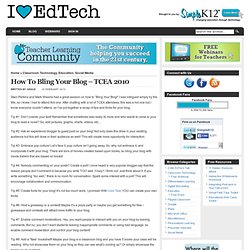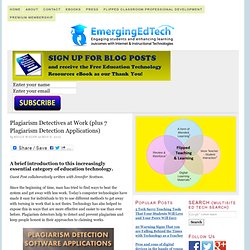

The Ed Techie. [The following is an adapted extract from the upcoming Battle for Open book, which I'm bouncing off you lot first].

I am not by nature an overtly political person, in that I don't interpret everything through a political lens. So, rather like Clay Shirky and higher ed, writing on politics is not my strongest point. Which is by way of saying, sorry of what follows is a bit rubbish. I often avoid given a tight definition of open education, because I want to admit degree and variation in practice. Whilst some areas, such as OERs, have a very clear definition, others such as open scholarship, represent more of a general approach and set of beliefs. In his thoughtful critique of open source publisher Tim O’Reilly, Morozov argues that this vagueness around the term has been deliberately constructed by O’Reilly to create good PR: “Few words in the English language pack as much ambiguity and sexiness as “open.”
A history of Openness From Peter, S., & Deimann, M. (2013). Collaborate to graduate. Blog » Blogging. Our students just finished a second round of Student Led Conferences (SLC) this school year (one in Semester 1 and another in Semester 2).

SLCs are a formal opportunity for students to present to their parents about the state of their learning. The students’ advisor (a teacher responsible for a specific group of students during the school year) serves as a facilitator to prompt and guide the students if needed, but is a silent presence as the students share their learning with their parents. SLCs are not a time to talk about grades, student behavior, but about learning habits, process, improvements and goals. Although there was emphasis placed on an ongoing documentation of each subject area as learning and reflection happened throughout the school year, a significant amount of time was dedicated to prepare for the SLCs Preparation for Student Led Conferences Each subject area had to be represented with at least one blog post.
Teaching Writing Using Blogs, Wikis... / Using Blogs in the Clas. How To Bling Your Blog – TCEA 2010. Staci Perkins and Mark Weems had a great session on how to “Bling Your Blog!”

I was intrigued simply by the title, so I knew I had to attend this one. After chatting with a lot of TCEA attendees, this was a hot one but I know everyone couldn’t attend, so I’ve put together a recap of tips and tricks for your blog. Tip #1: Don’t overdo your text! Remember that sometimes less really IS more and who wants to come to your blog to read a novel? So, add pictures, graphs, charts, videos, etc… Tip #2: Ask an experience blogger to guest post on your blog! Tip #3: Embrace pop culture! Tip #4: Nobody commenting on your posts? Tip #5: Create fonts for your blog! Creating your broadcast network. I've been thinking a lot this week about the kinds of tools I use to put information 'out there' and looking at a few new ones that I'm trying to build in to my 'broadcast network', so I thought I would share a few of these and see what other educators out there think and use.

I can put my broadcast network tools onto a kind of cline or scale based around the 'richness' of the content and this correlates pretty much to the amount of time they take up to manage. BloggingAt the top of the scale there are my blogs. Here I provide the richest original content and these are still fueled by the belief that 'content is king'. If I really want people to read what I have to say, get over a clear message deliver valuable materials for learning etc, I have to get down to work and create it.
I have four blogs, this ones and 3 others: Creating a news portalNext down the scale is a tool that I've recently started using called Slinkset. Tech&Learning. Emerging Internet edtech. Plagiarism Detectives at Work (plus 5 Top Plagiarism Detection Applications) Guest Post collaboratively written with Jennifer Scottson.

Since the beginning of time, man has tried to find ways to beat the system and get away with less work. Today’s computer technologies have made it easy for individuals to try to use different methods to get away with turning in work that is not theirs. Technology has also helped to expose this in ways that are more effective and easier to use than ever before. Plagiarism detectors help to detect and prevent plagiarism and keep people honest in their approaches to claiming works. How do plagiarism detectors work? Who uses plagiarism detectors? Five top plagiarism detectors There are many plagiarism tools on the Internet. 1. 2. iThenticate. 3. 4. 5. 6. 7. Are you using any of these applications at your school?
Jennifer Scottson is a professional writer who enjoys writing on many different subjects. About Kelly Walsh. Teacher Training Videos created by Russell Stannard.